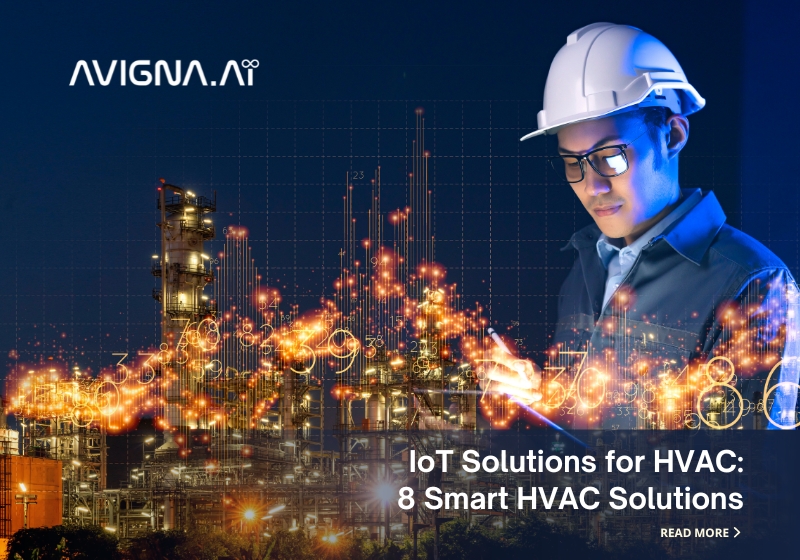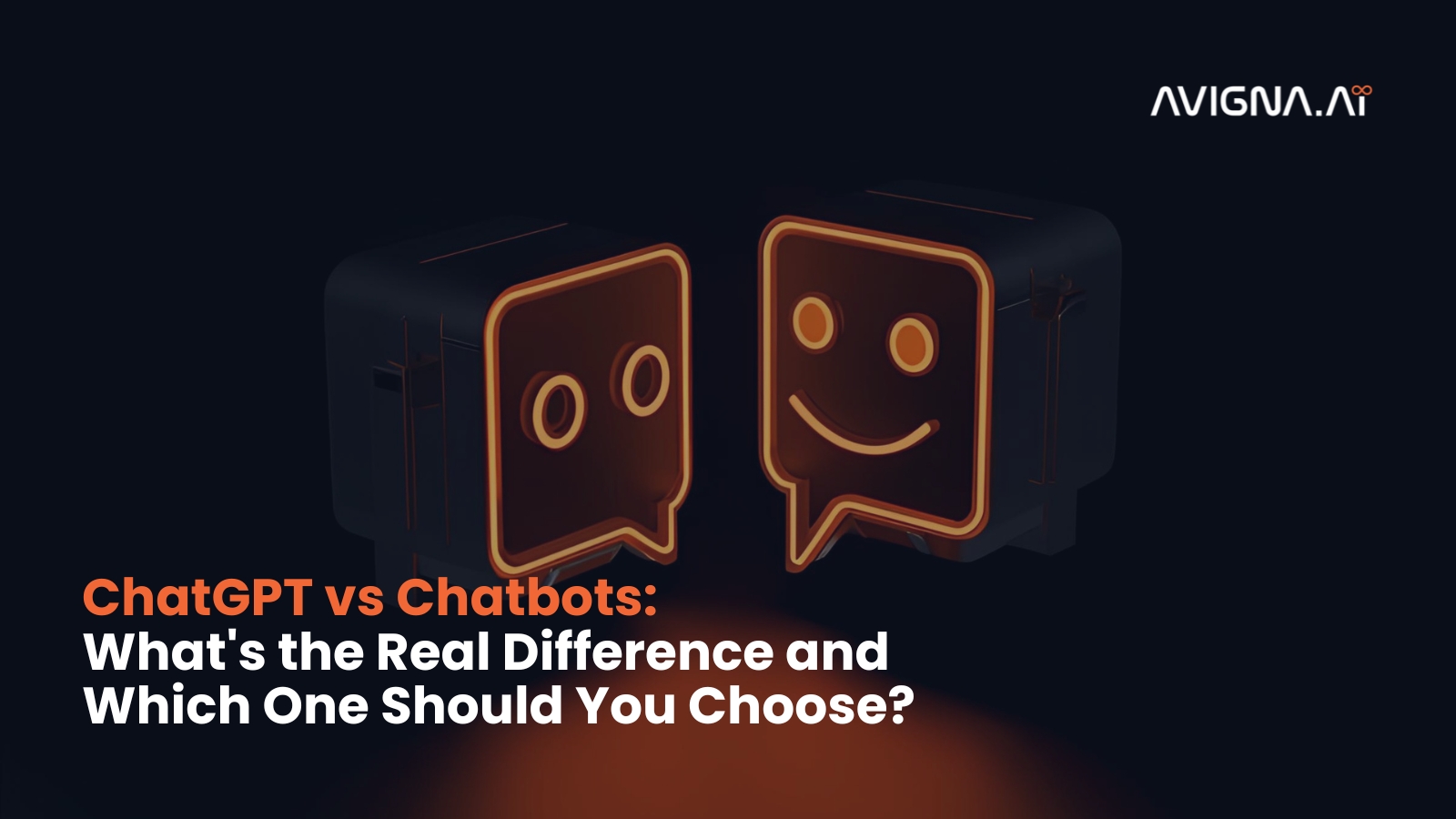Smart HVAC solutions enabled by the Internet of Things are revolutionizing comfort and convenience for modern homes and buildings. Where traditional HVAC units offer essential temperature control, modern IoT solutions for HVAC integrate sensors, controllers, and the cloud for remote monitoring, data-driven efficiency, and personalized climate experience. Curiosity mounts around the specific technologies emerging that promise to deliver unprecedented convenience, optimization, and maintenance, re-envisioning our management of heating, cooling, and indoor air quality.
Smart Thermostats
Smart thermostats are equipped with smart HVAC solutions that allow remote access through WiFi or Bluetooth. You can switch to “Away Mode” when going somewhere to avoid wasting energy and keep an empty home comfortable.
Remote Monitoring and Control with Smart Thermostats
The benefits of using an IoT HVAC monitoring system include remote monitoring, which enables customers to use a smartphone to change temperature settings in any location. Remote access also allows features like scheduling, geofencing, and away modes for optimized energy usage.
Learning Algorithms
Many smart thermostats utilize algorithms that learn homeowners’ temperature preferences and schedules over time. The thermostat then self-adjusts to these known patterns to precondition the home and run HVAC equipment more efficiently. For example, a smart thermostat may preheat or precool a home shortly before the typical arrival time to ensure comfort without wasted conditioning cycles.
Sensor Networks
To truly understand an environment’s thermal dynamics, several crucial data points must be monitored spatially across floors and rooms. Traditional single-point thermostats need this level of awareness. Thankfully, sensor networks integrated with IoT solutions for HVAC manufacturing systems solve this limitation.
Occupancy Sensors
Occupancy sensors identify when people are present in various areas of a facility. Occupancy sensors enable more precise HVAC control in unoccupied rooms when paired with a smart thermostat. This avoids wasted energy from conditioning empty spaces.
Temperature and Humidity Sensors
Sensor placement around homes provides precise environmental readings in multiple areas. Smart thermostats can then tailor HVAC separately for each zone as needed. Humidity sensing helps control not only thermostats but also dehumidifiers and humidifiers for customized indoor comfort. Real-time temperature and humidity mapping through Smart IoT HVAC system even enables proactive maintenance through IoT connectivity to spot patterns or issues early.
Predictive Maintenance
Predictive maintenance powered by IoT doesn’t just wait for breakdowns – it aims to foresee them. By continuously monitoring operational parameters, anomalies are flagged in advance for proactive servicing, which is one of the benefits of using an IoT HVAC monitoring system.
Condition Monitoring
Integrating HVAC equipment like air handlers, chillers, and rooftop units with IoT capabilities allows remote condition monitoring. Sensor data on runtime, vibration, refrigerant levels, and more provides visibility into performance trends over time. This data aids in predictive analytics for forecasting equipment lifespan and future repairs or replacements.
Predictive Analytics
Data aggregation from IoT solutions for HVAC manufacturing informs predictive algorithms and simulations. These Analytics identify service patterns, inefficiencies, and component deterioration indicators. By projecting maintenance needs well in advance of breakdowns, HVAC service providers can proactively schedule tune-ups or upgrades. This results in improved customer satisfaction with fewer disruptions alongside lower operational expenses than reactive maintenance.
Energy Management Systems
By meshing IoT-enabled HVAC systems with EMS, bidirectional communication enables crucial demand response automation. Now, facilities seamlessly participate when utilities dispatch remote shedding signals. Thermostats adjust up slightly, or fans slow down temporarily until constraints are overcome in smart HVAC solutions.
Demand Response
Building energy management systems (EMS) integrated with HVAC via IoT allows demand response participation. During peak load periods, utilities can then remotely adjust thermostats to shed conditioned load, such as by raising cooling setpoints. In return, customers may receive bill credits or incentives for their flexible load. This distributed approach improves grid reliability and lowers costs for all ratepayers by preventing new-generation infrastructure.
Energy Usage Analytics
EMS powered by IoT provides ongoing consumption tracking and historical analysis online. By spotting abnormal spikes or inefficiencies, facility managers gain insight for targeted efficiency upgrades such as economizer repairs or condenser coil cleaning. Users also achieve visibility into ROI for green investments or benchmark different building systems.
Cloud-Based Platforms
Rather than operate as isolated silos, accurate “system of systems” control synergizes interoperable building resources. To achieve this, HVAC integrates lighting, security, BMS, and more through cloud-based platforms.
Centralized Control
IoT solution for HVAC manufacturing aggregate data streams and enable central control of geographically dispersed HVAC portfolios. Managers access a unified dashboard to adjust settings, track performance metrics, and detect issues across all locations remotely.
Data Storage and Analysis
With large-scale data collection and processing capabilities, cloud platforms power advanced features like artificial intelligence and machine learning. Algorithms trained on historical sensor datasets then automatically provide actionable recommendations.

Inside this free eBook, you’ll find straightforward answers to common questions, demystifying the intricacies of IoT implementation in heavy industries. We’ve carefully curated a collection of FAQs, covering everything from predictive maintenance and security considerations to sustainability, real-time monitoring, and collaborative engineering efforts. Download your copy now.
Integration with Building Automation Systems
Scalable open protocols smoothly expand system intelligence to new technologies. Adding extra sensor points or control zones becomes plug-and-play instead of costly reprogramming – protecting initial smart building investments long-term in an automated system.
Interoperability
Integrating IoT solutions for HVAC manufacturing with building automation systems (BAS) allows coordinated “system of systems” control. Interoperability between HVAC, lighting, access, fire systems, and more creates synergies like automated demand response. It facilitates load sharing between building resources to maximize efficiency and flexibility benefits for facilities managers.
Scalability
BAS empowers expansion from pilot smart buildings to brilliant campus-wide infrastructure. Their open protocols accommodate plug-and-play integration of new IoT technology. As needs grow, BAS scalability supports modifications like adding zones or augmenting sensor coverage – futureproofing investments for sustainability over decades of operation.
Remote Diagnostics and Troubleshooting
Gone are the days of waiting around for a service tech. Remote connectivity is one of those benefits of using an IoT HVAC monitoring system that provides diagnostics at any time to identify and solve common HVAC complaints without onsite visits.
Remote Monitoring
Constant remote observation via innovative HVAC equipment’s embedded sensors aids rapid issue detection without truck rolls. Wireless connectivity uploads real-time operating parameters, alarm statuses, and error codes to cloud-based platforms for diagnosis by service technicians anywhere.
Diagnostic Tools
Cloud-based applications provide sophisticated diagnostic tools to troubleshoot HVAC or detect silent issues remotely—resources like manual override commands, system schematics, and maintenance history databases speed resolution versus onsite callbacks.
User Feedback and Engagement
Beyond remote remediation, intuitive mobile apps boost every facet of servicing smart HVAC solutions. Field technicians stay seamlessly connected using modular tablets and internet-enabled instruments. Work orders, asset records, and technician reviews are automatically populated for touchscreen convenience.
Feedback Systems
Apps engage with customers to streamline support requests, feedback, and paperless post-job surveys. Customers appreciate online ticketing to report concerns from anywhere and then receive status updates until resolutions. This boosts satisfaction versus phone tag.
Mobile Apps
Well-designed mobile apps improve the customer experience with self-service features like appointment scheduling, payment, and an AR-enabled virtual building navigator. Integrating work orders, asset information, and other contractor resources into a mobile platform boosts technician efficiency, too, for advantages like real-time labor tracking at job sites.
Step into the Future of Smart HVAC with Avigna
IoT enables an array of smart IoT HVAC System solutions for remote monitoring, control, and predictive maintenance of HVAC operations. Intelligent sensors, controls, and cloud-based platforms are enhancing facilities management and optimizing performance.
Looking ahead, further developments in areas like AI, occupancy detection, natural language processing, and AR/VR offer new opportunities. This promises to elevate the HVAC industry to unprecedented visibility, flexibility, and efficiency.
Avigna offers reliable IoT solutions for HVAC. We are a leading IoT Solution provider based in India. Our signature IoT Platform Avigna Cube forms the basis of IoT innovations of our global customers. Contact us at queries@avigna.ai for a free trial of our IoT Platform Avigna Cube. Schedule a free consultation with us.



